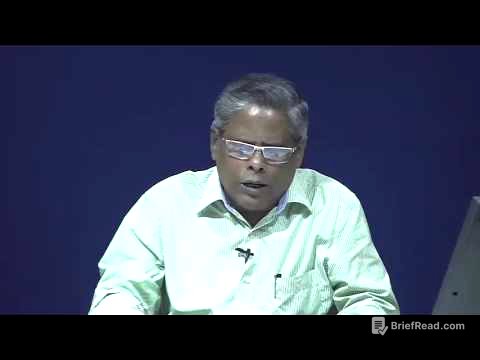TLDR;
This YouTube transcript features testimony from Brenda Lucki, Commissioner of the RCMP, and Deputy Commissioner Mike Duheme before the Public Order Emergency Commission. They discuss the RCMP's role in the Freedom Convoy protests, including interactions with government officials, resource allocation, and the invocation of the Emergencies Act. Key points include:
- The RCMP aimed to support local police services while navigating jurisdictional boundaries.
- The decision to invoke the Emergencies Act was a political one, with the RCMP providing input but not direction.
- The RCMP faced challenges in coordinating resources and communicating effectively with other agencies.
- Concerns about potential violence and the need to maintain public safety were central to the RCMP's response.
Brenda Lucki and Mike Duheme testify [0:00]
The Public Order Emergency Commission begins with the swearing-in of RCMP Commissioner Brenda Lucki and Deputy Commissioner Michael Duheme. Commission Council Gordon Cameron addresses a document glitch on the party database, assuring that all documents were accessible to the council. Commissioner Lucki and Deputy Commissioner Duheme confirm the accuracy of previous interview summaries and adopt them as evidence. Deputy Commissioner Duheme clarifies a minor correction to the RCMP's Institutional Report regarding police agencies and jurisdiction, which will be updated on the party database.
Break [1:47:48]
A short break in the testimony.
Brenda Lucki and Mike Duheme testimony continues [2:08:50]
Commissioner Lucki describes her role in overseeing RCMP operations across the country during the convoys, liaising with Chief Sloly, relaying resource requests, and briefing government ministers and the Prime Minister's Incident Response Group (IRG). She confirms regular briefings with PCO, PMO, and Justice intergovernmental Affairs, primarily at the Deputy Minister level, and her attendance at SSE and IRG meetings. Deputy Commissioner Duheme outlines his responsibilities for federal policing, including national security investigations, transnational crime, border security, and protective policing. He was appointed as the point person for coordinating RCMP assistance to operations throughout the convoys and ensuring the Commissioner had the necessary information for briefings.
Duheme explains the gold-silver-bronze command structure, where gold provides strategic direction, silver prepares the strategy, and bronze action the plan. He clarifies that the Ottawa command structure was specific to the Ottawa situation. Duheme corrects his earlier statement, clarifying that the 5,000 federal police employees are stationed across the country and internationally, not solely in Ottawa. He estimates approximately 1,200 federal policing employees in Ottawa, including those in national divisions and headquarters.
Break [3:36:04]
Another short break in the testimony.
Cross-examination of Brenda Lucki and Mike Duheme begins [4:33:50]
Duheme expands on the RCMP's protective mandate, which includes securing transport for elected officials and responding to demos at various locations. He clarifies that protective policing units were not dispatched to clear roads but coordinated with Ottawa Police Service (OPS) for ingress and egress routes. The RCMP's intelligence team, including the ideologically motivated criminal intelligence team and the protective intelligence unit (PIU), gathered and shared information with other agencies through a combined intelligence group.
Commissioner Lucki describes the RCMP's role as the police of jurisdiction in provinces other than Ontario and Quebec, representing about 70% of the workforce under contracts with provinces, municipalities, and indigenous communities. She explains the RCMP's ability to move resources within and between provinces under the provincial policing service agreements, with cost recovery arrangements in place. Lucki notes the operational advantages of having officers with the same training, equipment, and command structure.
Duheme explains that the RCMP had a larger footprint in Ottawa prior to 2014, responsible for security on Parliament Hill. After attacks on Parliament Hill, a review led to the creation of the Parliamentary Protective Service (PPS), reducing the RCMP's footprint. He notes that the perception of joint management of large events between the RCMP and OPS hasn't entirely dissipated.
Duheme states that he viewed the convoy through the lens of protective policing, ensuring the safety of mandated protectees. He felt comfortable that the Ottawa Police Service had things well in hand, with no additional resource requests. Lucki explains the logistical and administrative challenges of mobilizing resources to assist in Ottawa, particularly when plainclothes officers are requested. She states that any requests from Ottawa Police Service were fulfilled, with resources increasing over time, eventually exceeding 1,100 employees.
Lucki addresses the letter from Ottawa officials requesting 1,800 resources, explaining that it was unclear whether this request was solely for the RCMP or included other agencies. She emphasizes the need for a detailed plan before deploying resources from outside Ontario and Quebec. Lucki describes the appropriate sequence for Ottawa to seek assistance, first through the Ontario Provincial Police (OPP) and then, if necessary, from outside the province.
Lucki states that the government did not direct the deployment of resources, and operational decisions were based on resource availability. She interacted with Deputy Minister of Public Safety Rob Stewart and participated in briefings at the Deputy Minister, Minister, and Prime Minister levels.
The hearing examines a Teams chat where Mark Flynn comments on the Attorney General's statements, prompting a discussion about the RCMP's plan. Lucki states she cannot recall the context of the conversation. The hearing also examines text messages between Lucki and Commissioner Carrique of the OPP, where Lucki expresses the government's loss of confidence in the OPS and the need for safe action/enforcement. She clarifies that this was about helping the OPS develop a plan for safe enforcement.
The hearing examines another Teams chat where Alice and Whalen discuss the possibility of the RCMP taking over policing in Ottawa. Lucki states that there was a misconception that the RCMP, as the federal police agency, was responsible for taking over, and she had to educate officials that this was not their role. She states that she did not feel pressure from politicians to cross the line in directing how Ottawa should be policed.
Lucki states that the RCMP looks to its policies, procedures, and the RCMP Act for guidance on the line between the political side and the policing side. She states that she can get ministerial directives from the minister but only in regards to administrative matters. She states that she has never had to tell everybody to stop and you're crossing the line because it's it's they're very cognizant of it and they're very protective of it.
The hearing examines Deputy Commissioner Duheme's notes, which reflect a call with Deputy Chief Steve Bell of the OPS, who stated that Chief Sloly was going to ask for double of what he needs. Duheme states that he interpreted this to mean that the numbers provided publicly were not reflective of the actual needs.
The hearing examines the establishment of the integrated planning cell (IPC) by the RCMP and the OPP on February 8th. Duheme states that one of the objectives of the IPC was to nail down what was required for Ottawa. He states that it would be speculation to say whether the situation could have been handled more effectively if the IPC was put together sooner.
The hearing examines the "engagement proposal" and Commissioner Lucki's involvement in connecting Deputy Minister Stewart with Inspector Bowden. Lucki states that her role was as a facilitator.









